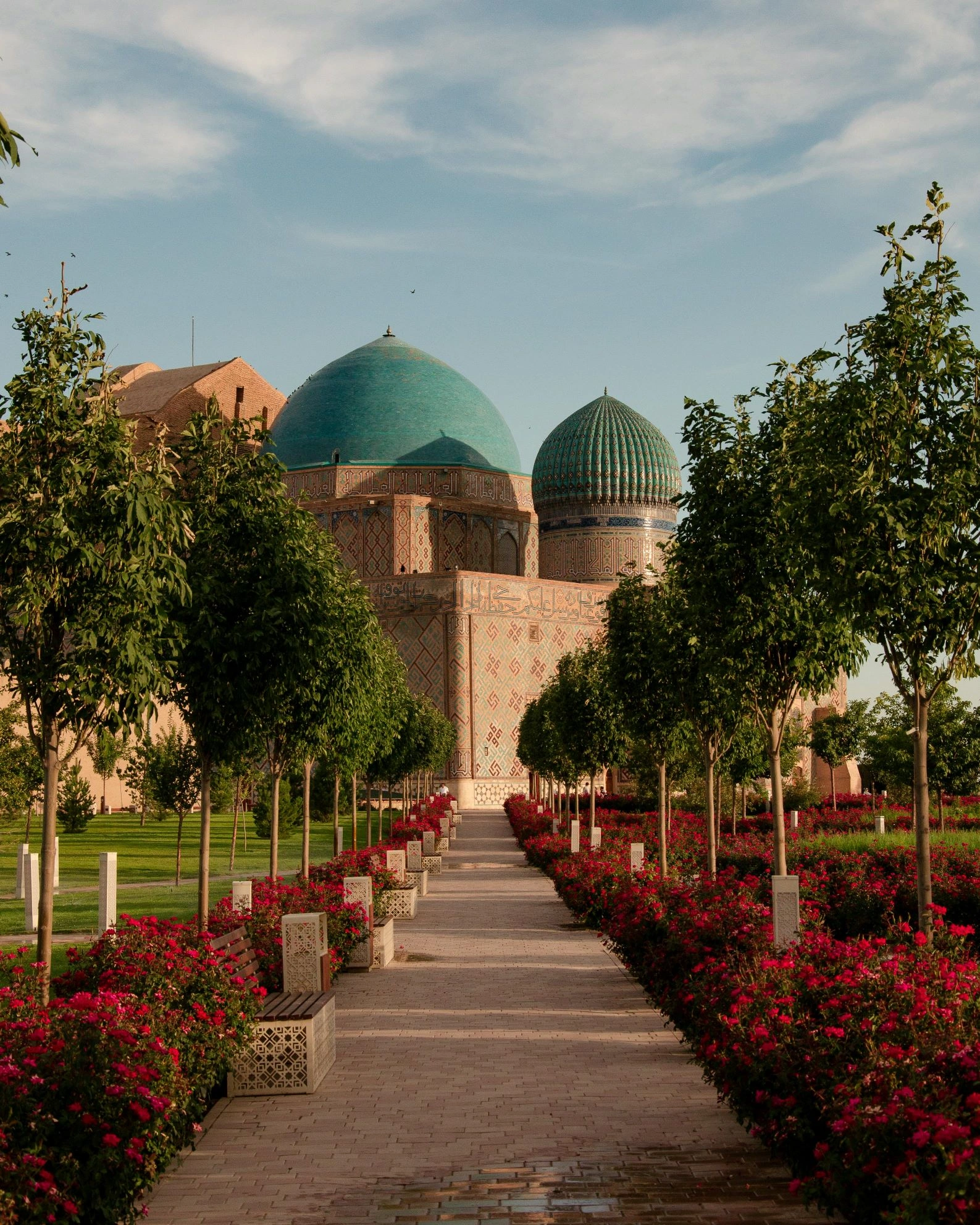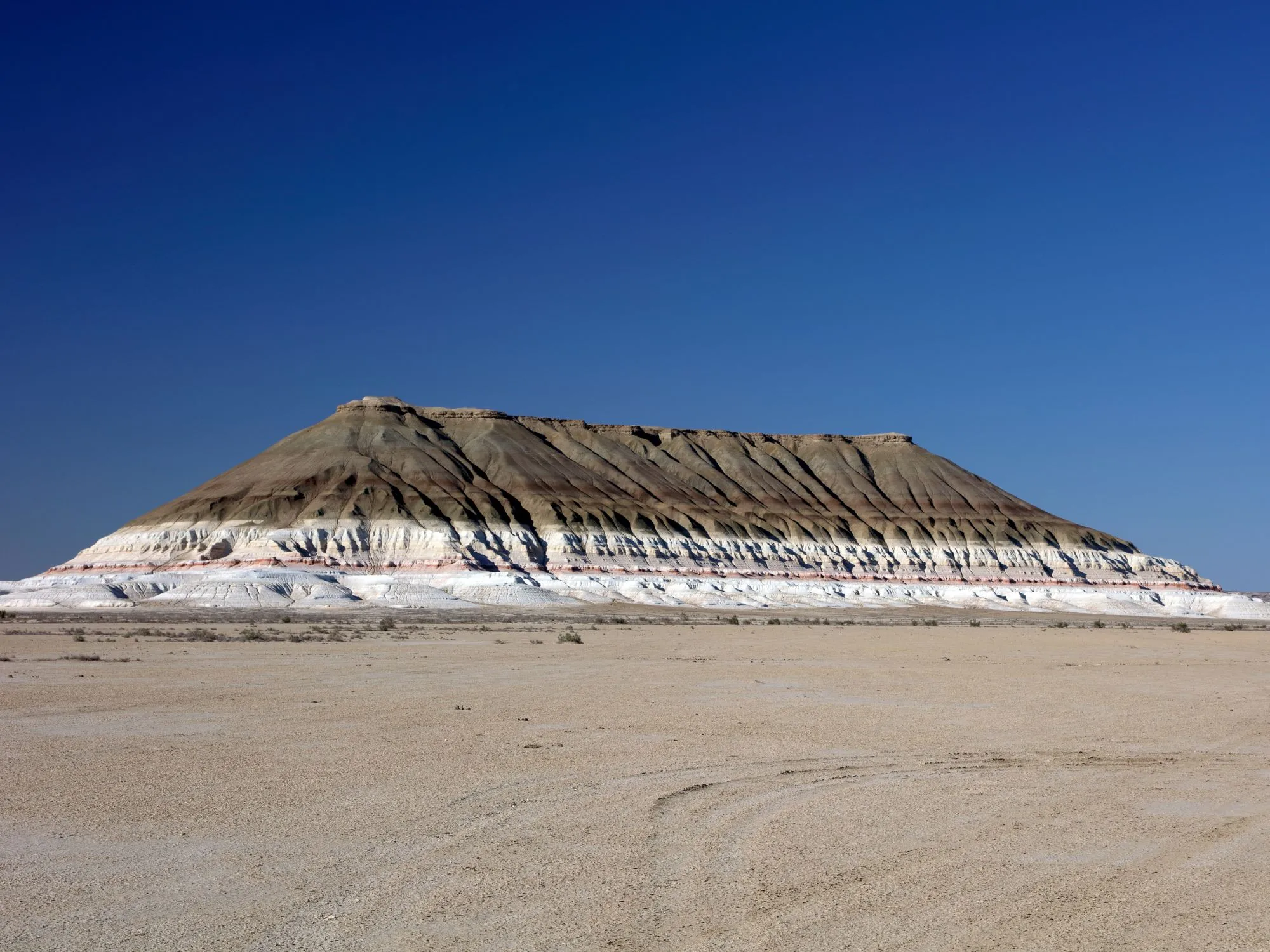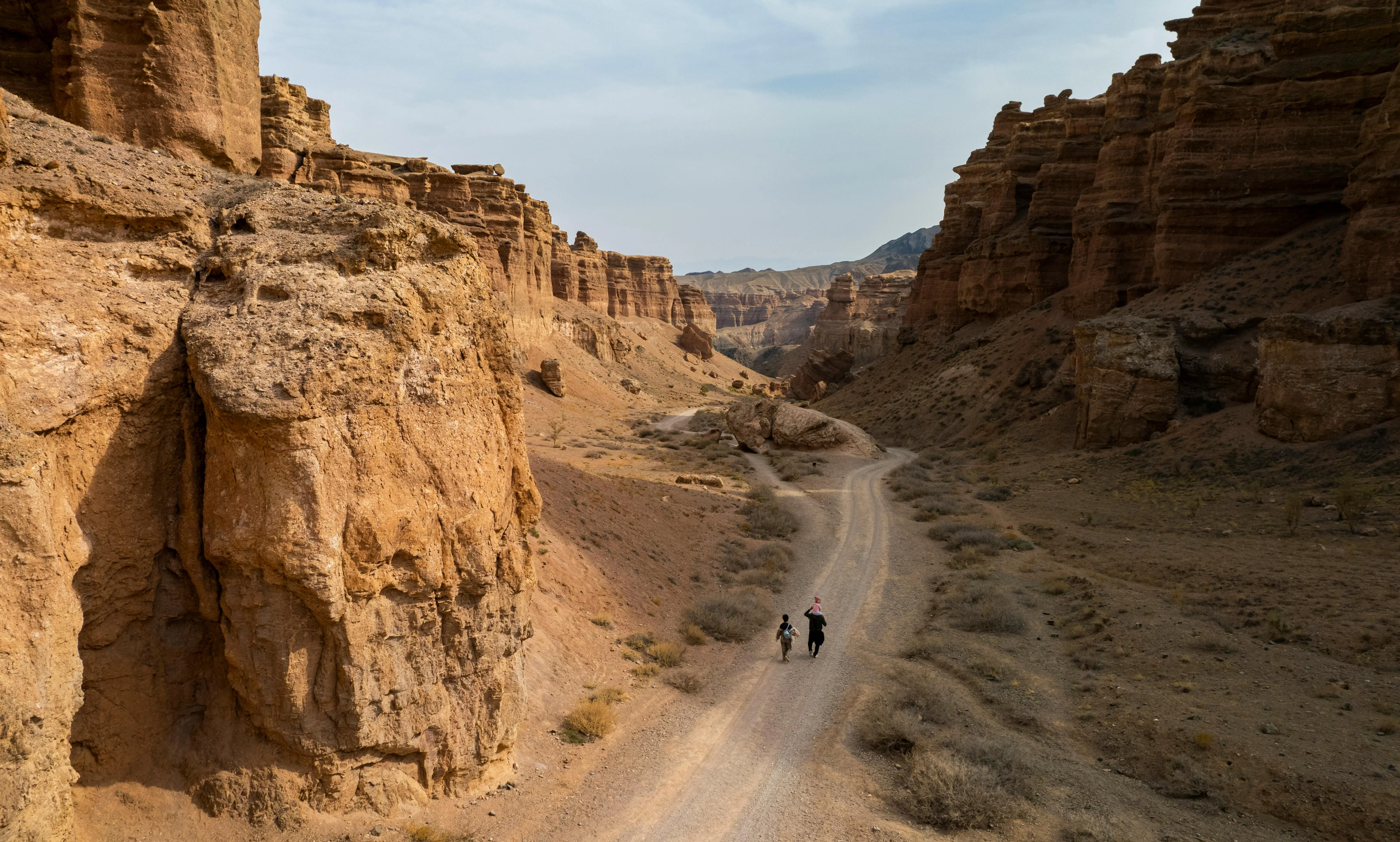Turkistan: The Spiritual Soul of Kazakhstan

Turkistan: The Spiritual Soul of Kazakhstan
Step into the golden heart of southern Kazakhstan, where time drifts like the desert wind and faith resonates in the call of distant minarets. Turkistan is more than just a city - it is a living chronicle of Central Asia’s spirit, where religion, trade, and nomadic heritage converge beneath an endless sky. The air here hums with history, and every stone seems to whisper stories older than the Silk Road itself.
A Land Richly Woven with History
Turkistan’s story stretches back long before modern borders were drawn. Once a bustling center on the ancient Silk Road, it connected China and Persia, the steppes and the deserts - a crucial artery of trade and culture that carried not only goods but entire civilizations’ ideas. Caravans traversed these vast plains, their camels laden with silk, spices, and gemstones, their travelers rich with stories. In Turkistan’s bazaars, merchants from Samarkand and Bukhara traded alongside Chinese traders, Persian scholars engaged in debates with Turkic poets, and Sufi wanderers shared the mysteries of the divine. The city became a crossroads where commerce met contemplation - a true meeting place of worlds.
Turkistan’s fate was shaped in the 12th century by the arrival of Khoja Ahmed Yasawi, a man of quiet strength and profound wisdom. As a Sufi mystic, philosopher, and poet, Yasawi became a guiding light for those seeking a spiritual path that harmonized Islamic teachings with the nomadic rhythms of the steppe. His words were not grand sermons but heartfelt songs - simple, sincere, and deeply human. He spoke of humility, compassion, and the unity of all creation, messages that resonated powerfully with the Turkic tribes of Central Asia. His hikmets, or spiritual poems, spread across the steppes, carried from one yurt to another like a sacred breeze.
When Yasawi passed away, his legacy did not fade; instead, it flourished. Centuries later, the conqueror Timur (Tamerlane), whose empire spanned from the Caucasus to India, commissioned the construction of a magnificent mausoleum to honor the saint. The result was the Mausoleum of Khoja Ahmed Yasawi, a masterpiece of Timurid architecture that still commands the skyline of Turkistan. Its vast dome - the largest of its kind in Central Asia - gleams under the desert sun, adorned with turquoise and cobalt tiles that shimmer like a mirage. The walls are inscribed with calligraphy, verses, and intricate patterns that seem to breathe with the spirit of eternity.
This was no ordinary shrine. Timur conceived it as a monument not only to Yasawi but also to the very soul of the Islamic world in the steppe. The mausoleum attracted pilgrims, scholars, and travelers alike. Kings and khans made offerings there, believing their reigns would be blessed by the saint’s presence. It became the spiritual heart of Kazakhstan and, even today, remains one of the most sacred sites in the Turkic world - a place where faith feels tangible, and silence carries the weight of centuries.
Throughout the rise and fall of empires - the Mongols, the Timurids, and the Kazakh khanates - Turkistan stood as a city of resilience. Though its walls bore the scars of war, its spirit remained unbroken. In the 16th and 17th centuries, it reemerged as the capital of the Kazakh Khanate, becoming the vibrant heart of a people forging their identity amid the shifting sands of history. From its palaces, rulers governed; poets and sages gathered in its courtyards; and caravans once again filled its markets with the lively hum of trade.
Even in later centuries, as Russian expansion spread across the steppes and the Silk Road faded into memory, Turkistan endured as a powerful symbol - its name spoken not merely as a location on a map, but as an idea, a promise of continuity between past and present. For the Kazakh people, Turkistan became more than just a city; it became a reflection of the nation’s soul, a sacred reminder of where faith, wisdom, and identity intertwine beneath the boundless sky.
Walking through Turkistan today is like feeling time layered as delicately as silk - the echo of hoofbeats, the murmur of ancient prayers, the scent of sun-warmed stone. Every corner tells a story: of saints and scholars, conquerors and caravans, all united by the same eternal call - the call of a land woven from history itself.
Culture That Breathes Through Time
Turkistan is not trapped in the past - it is alive, vibrant, and constantly evolving, preserving a culture that honors both reverence and resilience. The air is rich with the aroma of freshly baked samsa and sizzling kebabs, the joyful laughter of children chasing pigeons in mosque courtyards, and the melodic strumming of dombra strings that weave tales of nomads and poets.
Here, hospitality is more than a gesture - it is a cherished tradition. Guests are greeted with steaming tea and plates of baursak, golden dough puffs that symbolize prosperity. Families come together on carpets spread beneath apricot trees, sharing plov, manty, and hearty horsemeat dishes that reflect both abundance and resilience in a rugged land.
Artisans in Turkistan continue to shape clay, weave wool, and carve wood using techniques handed down through generations. Their crafts are more than mere souvenirs - they are living expressions of memory. When you look closely at a handwoven carpet, you don’t just see patterns; you see maps of journeys, blessings, and prayers intricately knotted into the threads.
Faith and the Sacred Horizon
Religion in Turkistan extends far beyond the walls of its mosques - it permeates the open plains and the very rhythm of daily life. Often referred to as the “Second Mecca of the Muslim World” in Central Asia, the city draws pilgrims from across Kazakhstan and neighboring countries, all following the teachings of Yasawi and honoring centuries of devotion.
The Mausoleum is more than just a resting place - it stands as a spiritual center. Within its cool, echoing chambers, pilgrims quietly offer prayers beside ancient tombs. At its heart, the great bronze cauldron, once used to distribute holy water, gleams softly in the dim light, symbolizing unity and purification.
Just beyond the mausoleum complex stretches Azret-Sultan, an expansive archaeological reserve featuring mosques, medieval bathhouses, and the remains of ancient walls. Here, history is not buried—it lives and breathes in the warm dust beneath your feet.
Cuisine: A Celebration of Steppe Flavors and Spices
Turkistan’s cuisine embodies its rich crossroads heritage, blending Turkic, Persian, and nomadic influences shaped by trade and the necessities of survival. Meals are leisurely, abundant, and communal.
Begin with lagman, hand-pulled noodles intertwined with tender lamb and fresh vegetables, infused with the bold flavors of garlic and cumin. Then savor beshbarmak, Kazakhstan’s national dish whose name means “five fingers,” reflecting the traditional way it’s eaten by hand. Each dish tells a story of adaptation - the vast steppe transformed into nourishment, scarcity transformed into abundance.
For dessert, locals enjoy chak-chak - fried dough coated with honey - or qurt, dried cheese balls that nomads carry on their long journeys across the vast plains. And, of course, no meal is complete without Kazakh tea, served in shallow bowls, warm and fragrant with milk and salt - a simple, comforting ritual shared among both strangers and family alike.
Fascinating Facts About Turkistan
- Turkistan is considered the oldest city in Kazakhstan, with archaeological discoveries tracing its origins back more than 1,500 years, establishing it as one of the nation’s most ancient settlements.
- Timur envisioned the Mausoleum of Khoja Ahmed Yasawi as a prototype that would inspire the magnificent architectural masterpieces later built in Samarkand.
- The Azret-Sultan complex was inscribed on the UNESCO World Heritage list due to its outstanding universal value as a significant center of Islamic culture.
- In recent years, Turkistan has experienced a remarkable transformation, with its skyline now harmoniously combining traditional minarets with contemporary museums, fountains, and plazas, reestablishing its role as a vibrant cultural capital.
- In 2018, Turkistan was designated as the administrative center of the Turkistan Region, underscoring its lasting significance in Kazakhstan’s identity as a symbol of rebirth.
Weather
Turkistan experiences a sharply continental climate, characterized by sun-drenched summers, crisp winters, and expansive skies that transition from fiery gold to deep indigo.
- Spring (April–May) is arguably the most enchanting season to visit. During this time, wildflowers blanket the steppe, temperatures range between 20 and 25°C, and the city buzzes with vibrant energy. It’s an ideal period to explore the mausoleum and stroll through the bazaars comfortably, without the oppressive heat.
- Summer (June–August) brings intense heat, with daytime temperatures often soaring above 35°C. However, the early mornings and evenings showcase the desert’s serene beauty, featuring long shadows and a gentle, soothing atmosphere.
- Autumn (September–October) is another perfect season to visit. The crowds diminish, the weather becomes cooler, and the markets brim with the bounty of the harvest - melons, grapes, and golden apples.
- Winter (November–March) transforms the steppe into a silent, frost-covered landscape. Temperatures often dip below freezing, yet the crisp air and snow-blanketed mausoleum create a hauntingly serene atmosphere, perfect for travelers in search of solitude.
Practical Tips for Travelers
- Dress Modestly: Turkistan is deeply spiritual. When visiting mosques or religious sites, cover shoulders and knees, and women should bring a scarf for head covering.
- Stay Hydrated: The dry continental climate can be deceptive - carry water, especially when exploring archaeological sites or walking long distances.
- Currency and Language: The local currency is the tenge (KZT). Most locals speak Kazakh and Russian, though young people often know basic English, especially in tourist areas.
- Local Etiquette: Remove shoes when entering homes or religious spaces. Accept tea when offered - it’s a gesture of respect and connection.
- Transportation: Turkistan is well-connected by train and highway to Shymkent and Almaty. Within the city, taxis and ride apps are reliable, though walking often reveals the city’s soul best.
- Photography: Always ask permission before photographing locals or religious ceremonies—respect and courtesy open more doors than curiosity alon
Modern Revival: The Spirit Endures
Today, Turkistan beautifully balances tradition and modernity. The city center shines at night with illuminated fountains, lush gardens, and elegant marble squares, all while preserving its deep spiritual essence. The modern Turkistan International Airport and new hotels have made travel more convenient, yet the city’s soul remains firmly anchored in the enduring rhythms of prayer and pilgrimage.
The Ethnocultural Center narrates the rich history of Turkic civilization, while the Caravanserai Complex brings the Silk Road to life with open-air theaters, artisan workshops, and enchanting water shows that shimmer under the night sky. In this place, tradition and modernity don’t clash - they engage in a harmonious dialogue, each enhancing the other's splendor.
In the nearby countryside, shepherds still tend their flocks beneath expansive skies, and yurts welcome guests with the quiet grace of tea ceremonies. This serves as a reminder that Turkistan’s spirit is not limited to its monuments - it thrives in its people, the rhythm of their daily lives, and the poetry woven into their resilience.
A City of Light and Faith
As evening falls, the minarets glow gold, and the call to prayer drifts through the cooling air. The Mausoleum’s tiles shimmer under starlight, and the scent of incense mingles with the dust of centuries. Standing there, beneath the same sky that watched over caravans and khans, you feel the layers of history converge into one timeless moment.
Turkistan is not just a destination - it is a revelation. It is where stone and spirit meet, where faith carves poetry into the desert wind, and where travelers find not just a place, but a reflection of something eternal within themselves.
Step into Turkistan, and you step into the story of a nation - a place where the past still breathes, and the horizon forever beckons.





.webp)





